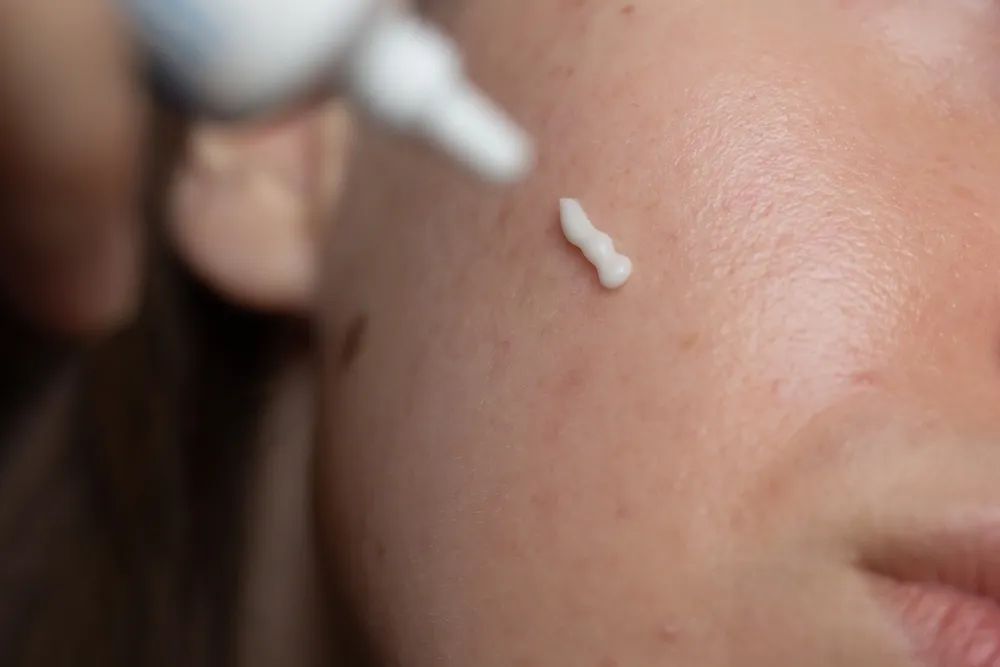What Is Adapalene?
Adapalene, a third-generation synthetic retinoid derived from vitamin A, has earned its place at the heart of acne treatment. This multitasking marvel acts as an anti-inflammatory agent to reduce acne redness and swelling at the source by reducing dead skin cell buildup and keep pores from clogging (a common cause of breakouts).
Adapalene is highly effective and better tolerated than many other retinoids. It's a go-to choice if you're just starting to explore the world of retinoids.
Adapalene is available in various forms, including creams, gels and lotions, so it can accommodate different skin types and preferences. Whether you opt for an over-the-counter formula or a prescription-strength solution, you can find an adapalene product that suits your skincare routine.
What Is Adapalene Used For?
Adapalene can address a wide range of acne, from blackheads and whiteheads to pimples and cysts. The American Academy of Dermatology recommends adapalene for managing acne due to its ability to reduce inflammation and help unclog pores. Its anti-inflammatory properties can lessen redness and swelling associated with acne, supporting clearer, smoother skin.
And it doesn't stop there: Adapalene's benefits extend beyond its primary role in fighting acne. By exfoliating your skin's outer layer, it can also improve your skin's overall tone and texture.
Where Does Adapalene Come From?
Adapalene was crafted in laboratories with a clear goal: to deliver an acne-fighting solution that sidesteps the common pitfalls associated with its predecessors, such as skin irritation, dryness and redness.
Adapalene first received Food and Drug Administration (FDA) approval as a prescription acne treatment in 1996 thanks to its efficacy in clinical trials. Its mechanism — which targets pimples at their root, reduces inflammation and promotes skin cell renewal — established a new benchmark in acne treatment.
In 2016, the FDA approved adapalene 0.1% gel as an over-the-counter acne treatment. The decision to transition adapalene gel from prescription-only to over-the-counter highlighted its safety and efficacy and made it available to a broader audience. This marked a significant advancement in accessible acne management.
How To Incorporate Adapalene Into Your Skincare Routine
Neutrogena® 0.1% Adapalene Gel Acne Treatment is approved for over-the-counter use to treat pimples, blemishes and acne. This lightweight formula promotes skin cell turnover, calms skin redness and helps keep your pores free and clear while minimizing irritation.
Ready to get started? Here are some tips to incorporate adapalene into your skincare routine and pave the way to clearer, healthier-looking skin.
Start With a Clean Base
Start with a gentle cleanser to wash away impurities and excess oil, and pat dry. A clean, dry face sets the stage for adapalene, ensuring it absorbs properly.
Use the Right Amount
Cover the entire affected area with a thin layer of the acne treatment gel. Spread it evenly over your skin, avoiding the delicate areas around your eyes, nostrils and mouth.
Check In With Your Skin
Pay attention to how your skin responds. It's normal to experience mild irritation or warmth at the application site at first. But if you have severe or lasting discomfort, consult a dermatologist.
Moisturize
Follow up with a non-comedogenic moisturizer to counter dryness and decrease the risk of irritation without clogging your pores.
Protect
To further protect your skin from photosensitivity, apply a non-comedogenic broad-spectrum sunscreen with SPF 30 or higher as part of your morning routine. Reapply at least every two hours or more if you're sweating or swimming. Combine sunscreen with other sun-safety measures, like wearing sun-protective clothing and seeking shade during peak sunlight hours.
Be Patient
Results can take time, and your acne may get worse before it gets better. You can typically expect to see improvement within eight to 12 weeks. Remember: Consistency and patience are key to unlocking the full benefits of adapalene. Stick with your routine, and give your skin the time it needs to transform.




